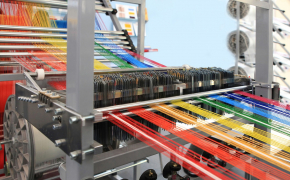Ten Tips for Sustainability Professionals in the Fashion & Textiles Industry
Background
Increased focus on sustainability and environmental stewardship is changing the legal and regulatory landscape affecting the fashion and textiles industry, providing new challenges for textile and garment manufacturers, distributors, and retailers. This article provides ten tips for sustainability professionals to navigate compliance issues throughout their supply chains. At a minimum, it is critical to know the materials used in your products and the details of your supply chain to effectively identify applicable environmental rules, regulations, and requirements—as well as track changes as they occur. Particularly for the fashion and textiles industry, with its significant environmental footprint, a clear understanding of product components and corresponding legal requirements form the necessary foundation to ensure compliance and minimize environmental enforcement risk.
1. Identify All the Materials Used in Your Product.
It is important for textile manufacturers to have a thorough understanding of the materials used in the manufacture and construction of their products. Chemical composition laws and regulations, responsible sourcing requirements, and recycled content mandates impose restrictions on textile manufacturers, distributors, and retailers that use or sell articles containing certain minerals or compounds. For example, the European Union (EU) restricts several chemicals that may be included in textile articles. The EU Registration, Evaluation, Authorisation and Restriction of Chemicals (REACH) law, the EU’s primary chemical regulation, limits the use of phosphates, phosphinoxides, biphenyls, and several other compounds applied in the development of textile articles, with heightened restrictions for chemicals that come into contact with skin. EU REACH also restricts the use of the widely found Perfluorooctanoic acid (PFOA) chemical and its salts in articles with certain exemptions. In addition, the United States (U.S.) and the EU have conflict mineral disclosure obligations for certain minerals that are used by the fashion industry in finishing details, embellishments, and jewelry, such as gold, diamonds, and mica. On top of these restrictions, recycled content mandates and labeling requirements are becoming increasingly common both in the U.S. and globally.
2. Conduct Due Diligence to Minimize Supply Chain Risks.
Responsible sourcing is a growing focus for both U.S. and international regulators. For example, alleged human rights abuses within the Xinjiang Uyghur Autonomous Region (XUAR) in China have recently prompted enforcement actions concerning products imported into the U.S. The U.S. Customs and Border Protection agency issued Withhold Release Orders for a number of goods coming from the XUAR on human rights grounds, such as cotton and cotton products, prohibiting their release from U.S. ports. Other countries have enacted or are seriously considering due diligence and modern slavery laws to try to address human rights abuses within supply chains. Accordingly, it is important for companies with complex supply chains to conduct due diligence to identify and eliminate human rights and modern slavery risks. Such due diligence also provides companies with documentation to present to regulators in the event that regulators bring an enforcement action.
3. Track Changing Environmental Laws and Regulations in all Jurisdictions Where Your Business Operates.
Environmental laws and regulations can vary greatly between countries and even between regions within countries. To reduce risk exposure, it is critical to understand the environmental legal regimes in the countries and regions in which you operate. Further, with increasing global attention on climate change and sustainability, many countries and governing bodies are adopting or are in the process of adopting new domestic environmental laws and regulations, as well as international treaties and agreements. Per- and polyfluoroalkyl substances (PFAS), advanced recycling, microplastics, and microfibers are all emerging areas in which the industry is likely to see relevant, new environmental laws and regulations in the near future. To reduce enforcement risks, it is important to review periodically the environmental laws and regulations impacting your operations in key jurisdictions to proactively adapt to any changes.
4. Know and Follow Reporting Requirements.
Reporting requirements have recently come center stage both within the U.S. and internationally. The Securities Exchange Commission has revisited the need for climate-related disclosures and is dedicating enforcement efforts to addressing consistency across filings. Many companies, including those in the technology and financial investment sectors, have expressed support for such requirements and already do so voluntarily. Internationally, countries such as the United Kingdom and the EU have implemented or are seeking to implement disclosure requirements modeled after voluntary reporting requirements, such as the Task Force on Climate-related Financial Disclosures (TCFD) recommendations. Given the number of different reporting obligations, potential unification efforts for voluntary standards, and growing requirements for mandatory disclosures, it is important to understand the reporting requirements in your key areas of operation, as well as ensure accuracy and consistency of disclosures.
5. Satisfy Applicable Extended Producer Responsibility Requirements.
Recently, a handful of states introduced Extended Producer Responsibility (EPR) legislation for plastic packaging that has implications for the fashion and textiles industry. California, Hawaii, New York, Oregon, and Washington have all proposed some type of EPR legislation related to packaging. As an example, the Oregon legislature introduced a bill designed to restructure Oregon’s recycling system by, among other things, increasing producers’ responsibility of products and requiring producers to pay a fee for any covered product it sells in Oregon. As different states consider EPR legislation, it is important to understand the breadth of the legislation and requirements within each jurisdiction in which your company operates. Similarly, companies with international operations could be impacted by textile disposal laws, such as France’s Anti-Waste law, which bans companies from destroying unsold inventory, such as clothing, shoes, and other products.
6. Review Eco-Friendly Marketing Campaigns to Ensure Compliance with Green Marketing Rules.
Companies that seek to make environmental claims regarding their products must be sure that such claims are accurate and can be substantiated with data. The Federal Trade Commission (FTC) has brought suit against textile manufacturers and retailers for making false or misleading claims relating to the environmental impact of their products, inconsistent with the FTC Green Guides, which shed light on the FTC’s interpretation of green marketing requirements. For example, claims about a textile’s biodegradability, recycled content, and organic nature are subject to scrutiny by the FTC and the U.S. Department of Agriculture, with harsh penalties for false or misleading statements. These requirements can be extremely specific. For instance, to lawfully make an unqualified biodegradable claim in the U.S., marketers must be able to prove that the entire product or package will completely break down and return to nature within a reasonably short period of time after customary disposal. The FTC has defined a reasonably short period of time as one year. For compostable claims, marketers must have competent and reliable scientific evidence that all materials in the product or package will break down into—or become a part of—usable compost safely and in about the same time as the materials with which it is composted. Accordingly, the Green Guides should be reviewed before external issuance of any specific environmental claim on a given product.
7. Integrate Sustainability Company-Wide.
Sustainability affects all aspects of a company at all levels, and so sustainability principles should be integrated company-wide in order to have a real effect. The potential for success is improved when sustainability is promoted and supported throughout the company rather than limited to a “project” or a “division.” Putting together the right team can help significantly to implement sustainability throughout a company. The right team will vary depending on the culture and structure of your company, but it is important to have the right people in the right positions to make decisions and to carry them out. All levels within your company should be represented to help ensure company-wide integration.
8. Get Buy-In from the Top.
To assist in integrating sustainability company-wide in an effective and efficient manner, ensure that even the top levels of your company are on board and visible to others—internally and externally. For most companies, integrating sustainability effectively requires a culture shift and dedicated efforts. Given the significant changes that might be necessary to increase overall sustainability, a clear commitment to sustainability from leadership is often a wise first step, especially alongside a policy, statement, or program.
9. Consider Investing in Sustainability.
There are many ways to integrate sustainability into your company’s operations. Invest in initiatives that make sense for your company. There are a number of legitimate sustainability initiatives that capitalize on existing corporate practices to achieve sustainable ends. The key is treating sustainability just like any other business priority: develop realistic metrics to assess and measure your company’s success at achieving sustainability goals, while also considering the company’s overall return on investment.
10. Expect Increased Enforcement.
Heightened focus on environmental compliance in the U.S., alongside the significant environmental footprint of the fashion and textiles industry, suggests that it may face greater regulatory controls and enforcement in 2021 and 2022. U.S. fashion and textiles industry participants should continue to track legislative, regulatory, and policy developments to proactively manage and mitigate any enforcement risk in domestically based operations.
Beveridge & Diamond’s Textiles & Fashion and Sustainability, ESG groups advise companies in the textiles and fashion industry on the many global environmental and sustainability issues at play. We combine our experience in the field and insights from advising adjacent industries—such as retail, consumer products, forest products, and agriculture—to offer comprehensive environmental, health, and safety support to our clients. For more information, please contact the authors. Join our Textiles & Fashion email list to receive updates and event invitations.













